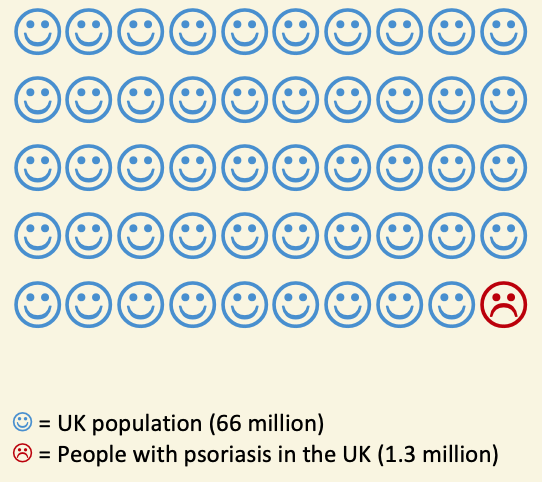
So you’ve just been diagnosed with psoriasis and/or psoriatic arthritis
You have no items in your basket

Around 1 in 50 people, which is about 1.3 million, or around 2% of the UK population. It affects all genders, onset may occur at any age, but there are two peaks in incidence — between 20–30 years of age and 50–60 years of age. For many it will start in childhood.
It usually appears as red raised, scaly patches, known as plaques. In people with skin of colour, the redness is less pronounced, and psoriasis may appear as purple or darkened areas of skin with grey scales.
The cause of psoriasis is currently unknown. Any part of the skin surface may be involved but the plaques most commonly appear on the elbows, knees and scalp. It can be itchy but is not usually painful. Nail changes, including pitting and ridging, are present in nearly half of all those who have psoriasis.

For those that have psoriasis, around 1 in 4 may develop an associated psoriatic arthritis (PsA), which is about 325,000 people, or around 0.5% of the UK population.
PsA causes pain and swelling in the joints and tendons, accompanied by stiffness particularly in the mornings. The most commonly affected sites are the hands, feet, lower back, neck and knees.
Psychological impact can affect individuals differently, for children and adults, it could be profound, but learning to cope and dealing with the conditions is a good place to start.